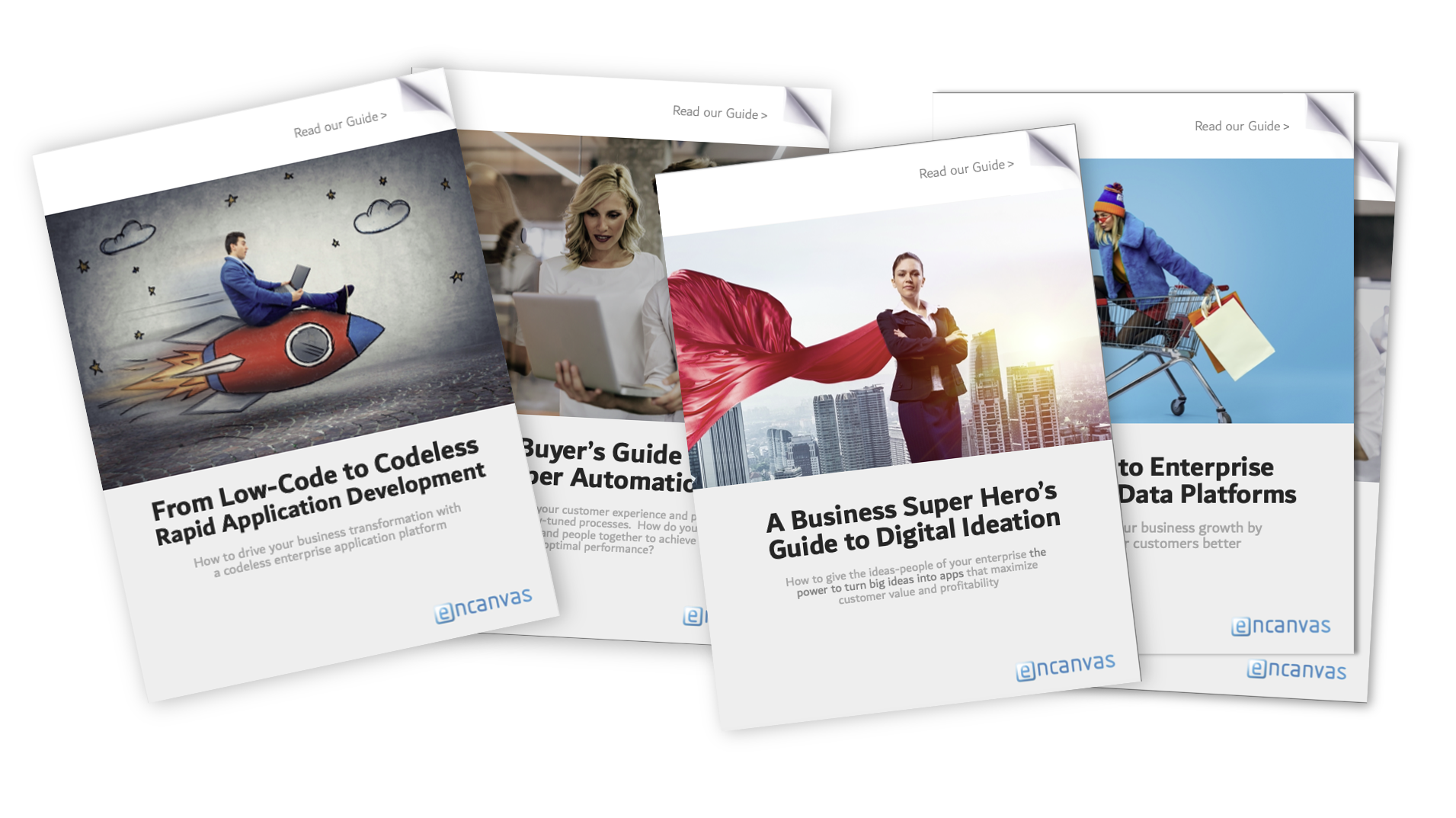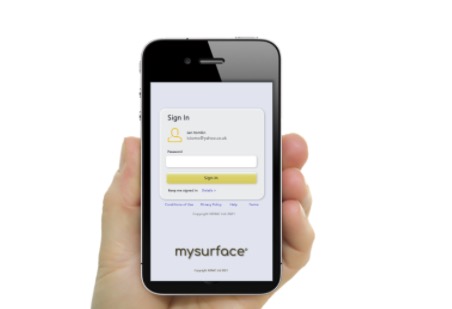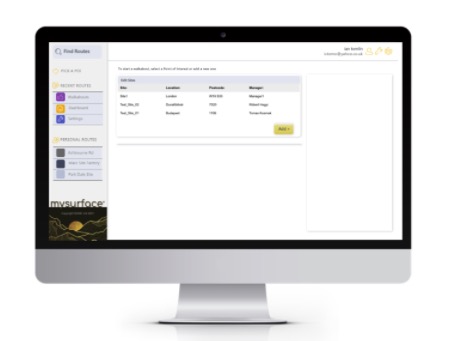EXPERIENCE ENCANVAS IN 60-MINUTES!
We're always happy to walk you through Encanvas no matter where you are in the world.


The desire of most digital businesses is to make informed decisions driven by rich data analytics. In this article, we explore how digital documents are helping to achieve that.
Tonis Haamer is one of the cleverest businesspeople I know. He runs a Overall Eesti, technology business in Estonia along with his brother, Mart. Still today, a big part of the business is office equipment, the company’s heritage. But the market for office printing is not what it was, and this caused Tonis to realize that the onward growth of the business demanded a rethink in how it is resourced.
Now, Overall Eesti is a very people-centric business. The team behind the brand is extremely hard working, extremely loyal. Shedding staff wasn’t a desirable go-forward plan. For this reason, Overall Eesti began its journey to become data driven, and one of the most advanced digital businesses.
I had the opportunity to interview Tonis on behalf of Canon Europe when I was running strategy around software solutions for the brand. I was looking to see how companies are adopting data insights, and Overall Eesti was an example.
Over a couple days, Tonis explained the objective behind the company’s data driven agenda was to make smarter decisions more often to answer new questions as they emerged, and to reinforce sub-optimal processes with new applications built using digital documents when it became obvious there was an opportunity to streamline.
Tonis explains, “To be data driven means being able to answer new strategic questions as they emerge. To do that means you have to harness your operational data that comes from ERP, service, CRM, HR, and other front-line business systems. It demands the ability to re-use this data for new purposes. And the challenge that brings with it is how to get the quality and integrity right. Once you’ve achieved that, the possibilities open up. But it is not a trivial task to create composable data.”
Almost a decade ago, Overall Eesti became one of the first companies in the world to create a home-grown Digital Data Fabric they called ‘CLIO.’
As Tonis explains, “Preparing your data is one of the biggest technical challenges of creating a data driven approach to business. It’s not just about harvesting the data you already have. Almost inevitably there will need to be enrichment of data, and you suddenly realize how poor the quality of data is from systems that only use aspects of the databases designed to support their operation. Furthermore, we found that some of the key links between data-sets did not exist. We had to find ways of connecting records in one system with the next by using fuzzy logic matching to construct the relational ties that were missing.”
As an early adopter of data fabric technology, the Overall management team are very familiar with the journey to overcome technical challenges, but Tonis is clear that data quality is only a foundational stone of a broader change agenda.
It starts with rewiring the culture of management towards the importance and use of data. This, and understanding what the strategic priorities are and what questions remain unanswered. You need these three qualities: clarity of purpose, data culture, and data integrity all in place before you start to see returns for your investment. For many businesses, the cost and complexity of that change has discouraged them from moving forward.
Digital documents, and the data fabric they reside on, offers the necessary blend of tooling for organizations to become data driven. These technology instruments are important, but—as this case example implies—overcoming the cultural, behavioral and strategic planning challenges may still yet be the greater obstacle to success for business leaders prepared to give the data driven business model a try.

According to the Gartner report “Adopt a Composable DXP Strategy to Future-Proof Your Tech Stack,” 60% of mainstream organizations will use the composable business model as a strategic objective by 2023.
Your business model might benefit from artificial intelligence (AI), the Internet of Things (IoT), digital ledgers like Blockchain, data visualization, virtualization… even the MetaVerse. Meanwhile, our digital data fabric spans your enterprise to lever value from existing data and IT investments. Additionally, it offers an onramp for the competitive advantage the world of digital brings.
Businesses don’t want to produce ONE digital document. Once you’ve created your first digital document, you’ll soon discover many other publications and processes that benefit from the technology. To manage the lifecycle of designing, publishing, distributing, and analysing digital documents across your business, takes a highly sophisticated digital platform; one that’s easy to deploy, personalize, safe for data, and easy to govern, manage, and grow.
Technology can be powerful, but it can also be complex to implement and adapt. But not Encanvas. Instead, our three-tier architecture brings digital coherency, data security, and painless operational governance to your enterprise.
Quickly design and publish digital documents on Encanvas using our unique Canvas architecture. Canvases make data across and beyond your enterprise ‘composable.’ Likewise, a canvas can contain an unlimited number of sections. It brings together all the elements of digital documents—data, user interface (UX) design, if/then logic, presentation, and transition rules, design elements, governance (including management, distribution, ownership, archival rules, etc.)—in a simple intuitive format that’s easy to learn and use.
Composing new AI-powered digital documents creates smarter, more responsible, scalable AI. Therefore, this enables better learning algorithms, interpretable systems, and a shorter time to value promoting productivity and agility. Furthermore, canvases can be used as standalone documents or interpolated together to fulfil complex information processing functions across and beyond your business.
Imagine an invisible digital umbrella spanning your enterprise, able to interact with all your people, systems, data, and processes. To sum up, that’s what our digital fabric is all about. It’s a private-cloud deployed data processing environment for digital documents. As digital business accelerates, and data becomes increasingly complex, digital documents—underpinned by a digital data fabric—support the need to design personalized information experiences at pace, deploy fast, and manage painlessly.
In its latest digital transformation trends report, Gartner argues that—‘data fabrics leverage existing skills and technologies from data hubs, data lakes and data warehouses while also introducing new approaches and tools for the future.’
Use our Digital Data Fabric to create as many digital documents as you need and change them as often as you like. Publish outward-facing digital customer materials and portal solutions, or internal information collaboration and data processing solutions.
Data fabric: reduces time for integration design by 30%, deployment by 30% and maintenance by 70%.
(Gartner)
Encanvas Digital Data Fabric takes care of the complex data integration, cybersecurity, management, governance, and processing tasks that are needed to install robust enterprise-grade IT solutions. Our digital data fabrics maximize data value by simplifying integration challenges and reinforcing Master Data Management (MDM) rules; reducing the replication of data assets, minimizing data complexity, and speeding up the time-to-market of new digital document applications.
The safest way to control digital documents used in the enterprise is to manage published content in data safe containers, protected by rigorous information security policies. Digital Cloud Spaces are, in essence, private cloud containers offering unprecedented cybersecurity, governance, and scaling capabilities. Using Digital Cloud Spaces, Digital Data Fabrics can coexist on the same private cloud and are easily managed and replicated. Cloud clustering Underpinning Encanvas Digital Cloud Spaces is a series of proprietary industry-leading cloud clustering technology innovations.

Most enterprises today operate more than 80 SaaS apps, the consequence being ‘data sense’ is harder. The good news is that you can use a no-code aPaaS platform to bridge across enterprise silos to tame data spaghetti and create a single version of the truth

When the possibility of Software-as-a-Service (SaaS) solutions arrived into the market in the early 2000s — heralded in by the evolution of web platforms and cloud computing — they were game-changing for innovators in the tech industry.
Through cloud SaaS innovations, developers could bring their products to market faster (and eat much lower costs), focus on very tight niche solutions, offer products on a subscription, and give customers the opportunity to try them out immediately. Furthermore, technical support and endorsements could be supplied through the same online site that sold the products.
For buyers, SaaS was equally advantageous. No longer did they need to commit to a purchase before experiencing a product to see if it delivered value. The quality of products leaped up the scale, as providers HAD to deliver excellent quality, intuitive, and responsive applications.
The downside of SaaS is that it spreads your data across a wide number of data silos.
Enterprise computing practitioners were somewhat less thrilled by SaaS. Before its arrival, the role of the Enterprise CTO was unquestioned. They were the gods of technology, and nobody could get anything done in IT without their blessing.
The idea that departmental managers could arrive at the IT desk and start demanding software products they hadn’t even seen before, and show them immediate advantages was hard to counter, and left many IT heads on the back foot, trying to defend the common sense of requiring testing, integration and further validation before any recommendation was adopted.

The rise of SaaS adoption levels in the enterprise has soared over two decades, as department heads have got ever more involved in selection decisions on the tools they, and their teams, want to use. The power to make decisions drifted from the center of the enterprise to the margins.
Few could argue that the quality of applications used in business has benefited from SaaS. But at what cost?
Step into any large enterprise and you’ll encounter find the common problem of data held in various SaaS platforms with departmental managers pulling their hair out trying to gather it up to drive decisioning.

Guide to Digital Transformation
Guide to Hyper Automation
Guide to Digital Ideation
Guide to Customer Data Platforms
Guide to No-Code Platforms
Software-as-a-Service technology has played its part in making it close to impossible for real-time business decisioning to happen across the enterprise without an additional layer of ‘business intelligence and analytics’ technology being superimposed.
Even with the best data visualization and analytical tools, the problem of fragmented data silos pervades.
It’s not simply the case that SaaS tools separate usage activity into different places across the enterprise computing biosphere, using a myriad of separately authored apps results in every app using its own core data tables for common things that every organization needs to know about — such as people, departments, organizational hierarchies, policies, processes, suppliers and user groups. While some of these building blocks can be inherited from common directories, most are simply individually reproduced time and again by vendors.
Growing demand from department leaders and executives for new apps and real-time data analytics has created a demand for data reuse. And it’s when these requests emerge that the problems of data integrity and quality emerge.
Install any new digital innovation into an enterprise, and it’s almost inevitable that existing data will want to be harnessed.
When this happens, time and again, one finds that the original data tables operating within SaaS applications are incomplete, unused, or irrelevant. Business Analysts find themselves scratching their heads trying to work out which bits of data to string together to build a reliable picture of the operating reality.
Businesses want to be ‘digital’ but lack the quality and integrity of data to innovate.
It begs the question: Is there a better way? The answer is yes — and it’s been around for a while.
Secure&Live – A feature rich and data secure digital transformation platform. Secure and Live is a codeless Enterprise applications Platform-as-a-Service (aPaaS), built to turn business models and strategies into apps.
GlueWare – Enterprise iPaaS for bringing your data together, mashing it up, and bridging between your eCommerce store and back-office, streamlining processes for maximum results.
AppFabric – Build as many apps as you need using an agile codeless SDLC approach and change them as often as you like.
Live Wireframe – Design and publish ebooks, courseware and apps, then go live in two clicks!
CDP – Codeless Customer Data Platform to create a single view of your customer data. Use our data integration tools to harvest insights from across your enterprise and beyond.

Learn about the data safeguarding, features and modules of Encanvas that make it a leader in codeless enterprise aPaaS
The concept of cloud Platform-as-a-Service solutions has been buzzing around for over a decade since the arrival of cloud computing. PaaS describes the layer of technology that sits between Software-as-a-Service and the mechanical end of cloud–hardware infrastructure, memory disks and the like.
A no-code application PaaS is an environment for designing, deploying and operating tens — if not hundreds — of apps and software robots without needing to use code to design, deploy, and run them.
Using no-code-aPaaS means that Business Analysts found within IT or Digital teams (not coders) author applications. They do so working in consort with business stakeholders in what Gartner fashionably calls ‘fusion teams.’
Applications requirements go straight from the workshop whiteboard into a live wireframe that swiftly becomes a new application.
Examples of mobile and web desktop applications designed and deployed on no-code aPaaS


What makes no-code aPaaS different to what comes before is that at least 60% of the things you need to produce an Enterprise App come out of the box. It means the only things business Analysts need to get right are the drag and drop rules, if-then logic and workflows of the application they are building that are unique to the requirement. While No-Code applications development is fast, building apps on a No-Code Application Fabric is even faster.
People used to argue you needed a two-speed IT capability to make digital business work. That notion has thankfully gone away. No-code aPaaS returns IT influence from the outer fringes of the enterprise to the center.
That’s an awkward conversation in today’s boardrooms, but it’s arguably a necessary one.
Organizations that want to harness data, become data-driven, keep data safe, eradicate self-authored apps and spreadsheets, achieve excellence in customer experience, serve up the best applications for their stakeholders, and cut costs. History tells us that the best way to achieve it is to have a unified computing and data environment.

Data quality/integrity benefits include:
1. IT people used to coding will be resistant to change
2. Departmental heads may initially be resistant to the idea of sharing their data
3. Not every no-code aPaaS offers ALL the features you will need. So selecting the right platform with be important and isn’t always straightforward.

Ian Tomlin is a management consultant and strategist specializing in helping organizational leadership teams to grow by telling their story, designing and orchestrating their business models, and making conversation with customers and communities. He serves on the management team of Encanvas and works as a virtual CMO and board adviser for tech companies in Europe, America and Canada. He can be contacted via his LinkedIn profile or follow him on Twitter.
Now read:
At Encanvas we have a passion for low-code / no-code (we like to say codeless) software development. We’ve been leading innovation in the enterprise rapid applications development (low-code / no-code / data mashups) industry since 2002.
Our enterprise digital transformation platform is used to design, deploy and run custom apps by uniquely blending application (aPaaS), integration (iPaaS), Robotic Process Automation (RPA), and data mashup codeless software tools.
Encanvas brings agility and innovation to businesses. Used by data-driven organizations around the world, our platform evolves digitalization plans at the speed of light to maximize customer experience and minimize IT costs. Accelerate time to value of new applications as part of your digital transformation or data engineering program. Read the Encanvas Blog to learn more about what we do.

We live in a data driven business world. How do you tap into yours?
It’s thought Jeff Bezos was the first person to use the term Innovation Value Management (IVM) to describe data as a business asset based on its contributory value. If it wasn’t Jeff, then it was probably one of his team. Amazon is passionate about the value of its data. The company leadership team knows that capturing rich insights on its customers—their buying preferences and behaviors—offers an unrivalled competitive advantage.
When organizations shape their management approach to use data every day to make decisions, they are often described as operating a data driven culture. Organizations want to maximize the value of their data by using it to make business decisions. It’s never been more possible thanks to cloud computing and big data. And yet, the secret of driving business success through data often has more to do with the attitudes and skills of your people, than the technology they use.

Businesses that transition decision making to be evidence based, need curious minds to power change. Individuals at all levels of the enterprise must as the question ‘Why’ more often, and have data and analytical tooling at their disposal that equips them to rapidly find answers to those questions. In the digital age, a spreadsheet doesn’t quite cut it. You will need data harvesting and visualisation tools. More over, you will need data to be organized correctly in the first place, and probably cleansed of impurities. This is where low-code software apps come in.
Many of the new executive roles are analytics based. For example, in the office equipment industry, the transition to data-driven business has led many vendors to appoint Service Managers with an analytical background where previously, these roles were fulfilled by ‘the best field service engineers.’ Such roles today are largely about understanding patterns in data, managing people, and acting on escalations.
The latest research from Gartner suggests that, by 2023, data literacy will become an explicit and necessary driver of business value, demonstrated by its formal inclusion in over 80% of data and analytics strategies and change management programs.

Data has become the lifeblood of enterprise. Executive management teams are taking more of an active ownership role in BI initiatives than ever before. Once the bastion of large corporations—because they were the only community of business able to afford the extremely high price tag—business intelligence has become democratized over the last decade thanks to affordable ‘pay-as-you-use’ applications and cloud-based technologies that scale accessibility and affordability to dashboarding and data warehousing tools. What low-code software apps do is fulfil the ambition that many executives to further democratize business intelligence to every stakeholder in the enterprise, and potentially beyond it.
Creating a data driven ‘curious’ culture will help your business to understand customer behavior, react to market changes faster than your rivals and eliminate the unknowns. What organization would not want these abilities?

Armed with a new set of ambitions, organizations are establishing leadership roles to drive the transition of people, process, technology and data to evolve a data driven culture. The Chief Data Officer (CDO) role is growing in popularity as a standard bearer. According to the latest research from Gartner, this role is intended to:
In a digital era, businesses operate on data. Much of their opportunity is programmed into inbound marketing schemas and their operational performance depends on data analytics to execute hundreds of decisions based on fact—not gut-feel—to fine-tune internal processes and minimize sales costs. To create a data driven culture requires a culture change in many management teams that are accustomed to driving their business based on ‘hunches’ and ‘best guesses’ over what customers value and what they want. A digital economy means that enterprises no longer need to guess.
Jeff Bezos, the founder of Amazon is quoted as saying, “If you don’t understand the details of your business you are going to fail.”
The most commonly reported barriers to a data driven culture are:

The transition from analog to digital business behaviors has been swift; a matter of a few years. Many enterprises find themselves on the wrong side of this wave, operating without good customer, product, business or market insights. They find their operations somewhat sluggish compared to the ‘SaaSy’ new-kids on the block. Executives know, curious minds are needed to fast-track change at every level of the organization.
Attitudes to data vary across businesses. Leaders generally see it as crucial and an opportunity, while many departmental leaders find it a tantalizing prospect that’s probably out of reach. IT leaders, on the other hand, see data as a problem and a risk. And there will be many that see the surfacing of operational data as a risk, given that it might expose their underperformance. Bringing everyone on the same page will not be easy, but it is necessary to remain competitive in a digital economy.
Creating a data driven culture is a change project like any other. To be successful, your business needs to be armed with the same state-of-the-art methods and tools that your competitors will be using. Nothing less will do. That means harnessing robotics and artificial intelligence, analytical visualization tools, predictive modeling and automated escalation routines.
Unfortunately, when considered in isolation, none of this technology will actually help your business to harvest its opportunity and grow. Like most changes in business, it will take a blend of ‘people, process, data and technology’ to become a successful data-driven enterprise—and the need to change attitudes and behaviors will as always take center-stage.

Ian Tomlin is a management consultant and strategist specializing in helping organizational leadership teams to grow by telling their story, designing and orchestrating their business models, and making conversation with customers and communities. He serves on the management team of Encanvas and works as a virtual CMO and board adviser for tech companies in Europe, America and Canada. He can be contacted via his LinkedIn profile or follow him on Twitter.
Now read:

Without data, you’re just another person with an opinion
W. Edwards Deming, American Statistician
Data matters and it’s central to digital transformation. The problem is no matter how much companies invest in their data, and however they capture it, the quality will always be suspect. Without data, any ideas of digital transformation are likely to be a pipe dream. Low-code is transforming the ability of organizations to create custom apps to cleanse, organize and use their data.
Most companies hoard gigabytes of data on their finances, their products, their customers and markets. The difficulty is that almost no enterprise has its data organized in a structure that makes it easy to access. As soon as business leaders come up with ideas for business model re-invention, probably the next thought in the minds of DevOps leaders is ‘Where is the data coming from?’
Digital transformation projects have a habit of either generating new data (as in the case of sensor network-centric projects) or re-using old data (such as plotting assets or customers on a map and gaining value from location-centric perspectives), or a blend of the two. Re-using data found within the enterprise can be challenging because of data quality issues, the variations of data structures and field formats between applications, and issues getting data out of systems. This means DevOps teams need to have very good data management skills. Low-code platforms offer a smart new way for these teams to harness data that is close by but remains out of reach
How should DevOps teams approach their data challenges? Here are 10 ways DevOps teams are using Encanvas to breathe new life into their old data.
Old data may be held in various applications and formats. It’s not uncommon for Encanvas to gather information from spreadsheets, big back-office systems databases like SAP R3, IBM DB2, Microsoft Dynamics and SQL – all at the same time. Encanvas is a plug-and-play multi-threaded and multi-sourcing platform which means designers can create concurrent live data feeds from multiple systems or end-points at the same time. This capability is used extensively by designers when creating applications that re-use data from existing and new systems together, creating new data structures on the fly for the specific canvases they author as part of applications under development.
Your old data may require filtering to select only the records relevant to your project. A powerful feature built into Encanvas’s mashup environment is our special filter which allows designers to employ drag and drop controls to instantly create very powerful data filtering on inbound data from third party sources. Any number of filters can be applied to tables at the same time. For example, if a designer wants to only ingest data from a customer table of a specific type, and that relates to a specific region, they can create special filters for ‘types’ and ‘regions’ selecting only the records that apply to those conditions. All of this rich configuration is done without any coding and doesn’t influence the integrity of the ingested table, or the potential re-use of data in its native form by other applications (or canvases).
Old data may be held in various applications and formats. It’s not uncommon for Encanvas to gather information from spreadsheets, big back-office systems databases like SAP R3, IBM DB2, Microsoft Dynamics and SQL – all at the same time. Encanvas is a plug-and-play multi-threaded and multi-sourcing platform which means designers can create concurrent live data feeds from multiple systems or end-points at the same time. This capability is used extensively by designers when creating applications that re-use data from existing and new systems together, creating new data structures on the fly for the specific canvases they author as part of applications under development.
If your old data can benefit from being enriched by other sources of data, Encanvas’s mashup capabilities can really bring value by making the internal and external data accessible to applications designers without having to use coding or API to build new integrations.
Sometimes old data requires cleansing at the point of transfer from its original location using a machine to machine cleansing and transforming process to shed unwanted data and apply transformation rules to re-order, de-dupe and re-locate data to new data structures. Encanvas Software Robots make possible machine-to-machine integrations. They equip designers with the means to configure ETL actions and normalize data before it gets ingested into applications. Our software robots also automate the generation of notices to alert designers (and users too if necessary) that transformations have worked – or not. Transformations can be triggered by events, scheduled times, watch folder changes and a variety of other means.
A powerful (and pretty unique) feature of Encanvas lies in its ability to create quarantining protocols for old data that fails to live up to your expectations for data integrity. There are few good reasons to upload records that are unfit for purpose. If you are gathering customer records for example and would determine that records that fail to have any contact email, telephone or mobile numbers included are not suitable for use, then designers can create quarantining rules that filter this data out for special treatment. In such cases, the data remains ‘in the system’ but is no longer visible to users until it has been manually or machine cleaned.
It may be that old data is being ingested from multiple systems or end-points and you need to create a new data mart that has to prioritize the best likely source of good quality data over others. This can get really complicated because different systems may create new data at different speeds and this can create latency issues but, nevertheless, Encanvas has the codeless tooling to enable designers to author voting systems to vote on which source is most trusted. Voting systems can use algorithms to automatically test data integrity and then automatically augment the voting structure, or they can be manual, where the data owner or manager uses a sliding scale of trust levels to determine which source is proving to generate the best results (or both!).
When there are gaps in your old data, there are many ways that Encanvas can create new data as part of its application design. For example, the numeric controls of Encanvas allow designers to create formulas and calculations on data to total columns, sum value, source averages etc. that may be required for your new dashboards and reports but do not exist in the ingested data. Encanvas also has the ability to ingest SQL script and DLLs to make it easy for DevOps teams to re-use existing code blocks or create new APIs and transformations.
Another way to create new data is by using Encanvas’s mapping capabilities to apply location-data to existing addresses and locations. Encanvas has an integrated – and codeless – mapping engine (sometimes referred to as Geo-Spatial Intelligence, or ‘GIS’). It allows designers to plot and pin records on maps. The geo-data of records is added to the data-set (companies like Google and Microsoft charge lots of money to do this!).
Parachute in a high profile technology-centric team with a strong leader into an organization with an existing IT department it’s hardly surprising that you’re going to have to put out some fires and smooth over a few ruffles.
Balancing two-speed IT means having an internal IT team focused on reducing costs and improving process efficiencies through Business Transformation (BX) and a DevOps team re-inventing business models through Digital Transformation (DX) in tandem. Recognizing each team for its own skills and contributions to business outcomes and balancing praise is going to be important for a healthy culture.
We’ve saved the most dramatic way of fixing old data quality issues until last – because it’s no small project to build a new data warehouse to gather and re-organize data into new structures but sometimes it’s the most sustainable way to ensure that data integrity is preserved for the life of your application. For mission-critical processes, it’s probably the best quality outcome although the time and investment needed to create a data warehouse or enterprise data-hub are definitely ‘none trivial’. Encanvas includes all of the codeless tooling needed to fast-track the creation of new data warehouses and data marts using the data repository of your choice – whether you are moving towards a big data solution like Hadoop or are seeking a more traditional data structure like SQL or DB2.
So there you have it – ten ways Encanvas Low-Code can help you to turn old data into useful data for your next digital transformation.
To find out more about the capabilities of the Encanvas Low-Code platform, please contact our team.

Author
Francesca is an independent writer and head of communications for technology brands. Armed with a passion for writing about innovative technologies that can transform business, she serves on the management team of Encanvas and also works as a consultant and advisor to the executive teams of PrinSIX Technologies, Answer Pay and INTNT.AI, helping to rethink their marketing in order to tell their brand story. She can be reached via LinkedIn.

HOW TO MAKE YOUR ENTERPRISE DATA-DRIVEN BY ADOPTING A DATA CULTURE
Wikipedia describes Business Intelligence is as the strategies and technologies used by enterprises for the data analysis of business information. BI technologies provide historical, current, and predictive views of business operations. Increasingly, conversations on the subject of Business Intelligence quickly move on to the subject of building a data-driven culture and seeing data analytics (adopting business intelligence tooling) as the precursor of every business decision.
The market research portal marketwatch.com suggests the global market for business intelligence tooling will reach USD 147.19 billion by 2025, growing at a CAGR of 26.98% from 2017 to 2025. Meanwhile, Gartner suggests the analytics and business intelligence software market grew by 11.7% to $21.6 billion in 2018 in current USD. Modern BI platforms continue to be the fastest-growing segment at 23.3%, followed by data science platforms with 19.0% growth.
Organizations require low-code business intelligence tooling to build custom apps that maximize the value of their data by using it to make business decisions. When organizations shape their management approach to use data every day to make decisions, they are often described as data-driven.
A decade ago, data was interesting, useful maybe, but not always business-critical. There were ways around the problem of not sharing data. Executives could always drag someone into an office and interrogate them for answers to their questions, marketers could run forums and research projects and count on a reasonable number of willing customers or prospects to take part, salespeople could still pick up the phone and cold call their prospects.
Not today. The tempo of business changed when things went online. As eCommerce has grown, data volumes have exploded, and smartphones have increased in volumes beyond the size of our populations. With the introduction of 5G telecommunications, we are experiencing a hundred-fold increase in download speeds which means that it’s comfortably possible for me to operate a Chromebook laptop computer connected to a cloud-based repository without housing all of the apps and files I need on a hard disk. In a world with so much data, moving at light-speed is it any wonder that companies can no longer envision their managers crunching data on spreadsheets and thinking that it’s good enough!
To achieve this requires a culture change in many management teams that are accustomed to driving their business based on ‘hunches’ and ‘best guesses’ over what customers value and what they want. A digital economy means that enterprises no longer need to guess.
Jeff Bezos, the founder of Amazon is quoted as saying, “If you don’t understand the details of your business you are going to fail.”
In a digital era, businesses operate on data. Much of their opportunity is programmed into inbound marketing schemas and their operational performance depends on data analytics to execute hundreds of decisions based on fact—not gut-feel—to fine-tune internal processes and minimize sales costs.
Creating a digital culture requires a re-think in technology, people, process, and data management. This is where companies like NDMC Consulting come in; to help enterprises navigate their transformational journey. Encanvas Secure&Live is an example of an application software platform designed to equip businesses with digital culture to make decisions based on data.
Creating a digital culture will help your business to understand customer behavior, react to market changes faster than your rivals and eliminate the unknowns. What organization would not want these abilities?
The transition from analog to digital business behaviors has been swift; a matter of a few years. Many enterprises find themselves on the wrong side of this wave, operating without good customer, product, business or market insights. They find their operations somewhat sluggish compared to the ‘SaaSy’ new-kids on the block.
Even with ‘lots of data’ stored in their back-office systems, many businesses find there’s an issue with getting access to the data tools and data scientists needed to really make use of the data assets they hold.
Data has become the lifeblood of the enterprise. Executive management teams are taking more of an active ownership role in BI initiatives than ever before. Once the bastion of large corporations—because they were the only community of business able to afford the extremely high price tag—business intelligence has become democratized over the last decade thanks to affordable ‘pay-as-you-use’ applications and cloud-based technologies that scale accessibility and affordability to dashboarding and data warehousing tools.
The latest research report on the Business Intelligence industry by Dresner Advisory Service’s (2018) suggests that small organizations with up to 100 employees have a greater percentage of employees using analytics and BI apps daily. They attribute this to adoption of business models that need advanced analytics to function and fewer barriers to adoption compared to larger enterprises.
The emergence of Low-Code cloud application Platform-as-a-Service (aPaaS) solutions, mean citizen developers can now create their own web and mobile apps powered by robust databases (like SQL) and produce impressive business intelligence solutions with the latest data visualization technologies embedded.
Attitudes to data vary across businesses. Leaders generally see it as crucial and an opportunity, while many departmental leaders find it a tantalizing prospect that’s just out of reach. IT leaders, on the other hand, see data as a problem and a risk. And there will be many that see the surfacing of operational data as a risk, given that it might expose their underperformance. Bringing everyone on the same page will not be easy, but it is necessary to remain competitive in a digital economy.
Becoming data-driven is a change project like any other. To be successful, your business needs to be armed with the same state-of-the-art methods and tools that your competitors will be using. Nothing less will do.
That means harnessing robotics and artificial intelligence, analytical visualization tools, predictive modeling, and automated escalation routines. Unfortunately, when considered in isolation, none of this technology will actually help your business to harvest its opportunity and grow.
Like most changes in business, it will take a blend of ‘people, process, data and technology to become a successful data-driven enterprise—and the need to change attitudes and behaviors will as always take center-stage.
Encanvas is an enterprise software company that specializes in helping businesses to create above and beyond customer experiences.
From Low Code to Codeless
Better than code-lite and low-code, we created the first no-code (codeless) enterprise application platform to release creative minds from the torture of having to code or script applications.
Use Encanvas in your software development lifecycle to remove the barrier between IT and the business. Coding and scripting is the biggest reason why software development has been traditionally unpredictable, costly, and unable to produce best-fit software results. Encanvas uniquely automates coding and scripting. Our live wireframing approach means that business analysts can create the apps you need in workshops, working across the desk with users and stakeholders.
When it comes to creating apps to create a data culture and orchestrate your business model, there’s no simpler way to install and operate your enterprise software platform than AppFabric. Every application you create on AppFabric adds yet more data to your single-version-of-the-truth data insights. That’s because, we’ve designed AppFabric to create awesome enterprise apps that use a common data management substrate, so you can architect and implement an enterprise master data management plan.
Encanvas supplies a private-cloud Customer Data Platform that equips businesses with the means to harvest their customer and commercial data from all sources, cleanse and organize it, and provide tooling to leverage its fullest value in a secure, regulated way. We provide a retrofittable solution that bridges across existing data repositories and cleanses and organizes data to present a useful data source. Then it goes on to make data available 24×7 in a regulated way to authorized internal stakeholders and third parties to ensure adherence to data protection and FCA regulatory standards.
Encanvas Secure and Live (‘Secure&Live’) is a High-Productivity application Platform-as-a-Service. It’s an enterprise applications software platform that equips businesses with the tools they need to design, deploy applications at a low cost. It achieves this by removing coding and scripting tasks and the overheads of programming applications. Unlike its rivals, Encanvas Secure&Live is completely codeless (not just Low-Code), so it removes the barriers between IT and the business. Today, you just need to know that it’s the fastest (and safest) way to design, deploy and operate enterprise applications.
Learn more by visiting www.encanvas.com.
Ian Tomlin is a management consultant and strategist specializing in helping organizational leadership teams to grow by telling their story, designing and orchestrating their business models, and making conversation with customers and communities. He serves on the management team of Encanvas and works as a virtual CMO and board adviser for tech companies in Europe, America, and Canada. He can be contacted via his LinkedIn profile or follow him on Twitter.
Wikipedia page on Business Intelligence.
Above And Beyond Business Intelligence eBook written by Ian C. Tomlin
Beyond Business Intelligence book by Barry Devlin
Marketwatch global market report on business intelligence. Download sample report at kennethresearch.com
Gartner Market Share report, 2018